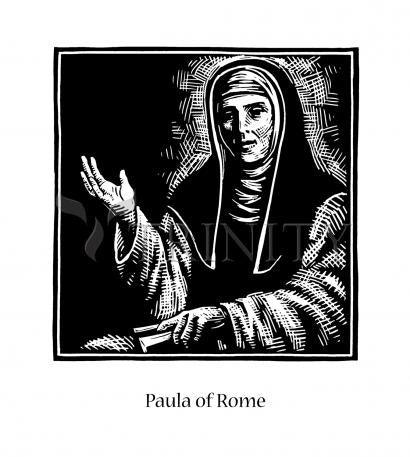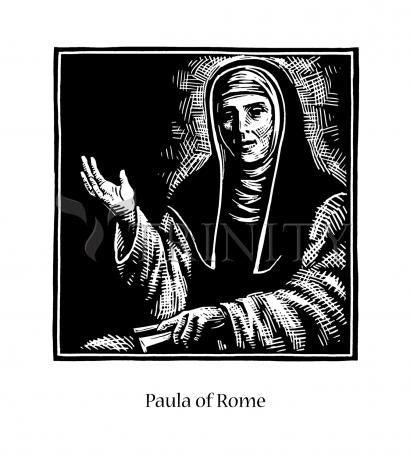St. Paula was born in 347 to a noble family in Rome. At the age of sixteen, she was given in marriage to Toxotius, a prominent nobleman. Though her husband was a pagan, he was devoted to her and gave her freedom to keep a Christian home and rear her children as Christians. They were blessed with five children.
When Paula was thirty-two years of age, her husband died suddenly, and she resolved to turn her large house in Rome into a monastery. Later, she traveled to the Holy Land with her spiritual father, St. Jerome. In Bethlehem, she established two monasteries, one for women and one for St. Jerome and his companions. Every day the nuns chanted the entire Psalter, which they were required to learn by heart. Paula was exceptionally austere in her fasting and lavish in her almsgiving, often giving away to the poor even the goods needed by her community for subsistence. She aided her spiritual father and brother Jerome in his controversies with Origen's followers: St. Jerome himself was hot-tempered, and St. Paula often exhorted him to confront his enemies with patience and humility.
>When Paula was fifty-six years old, she felt her death approaching, and heard Christ say to her, "Rise up, my love, my fair one, and come away; for lo, the winter is past, the rain is over and gone." To this she replied, "The time of harvest has come. I shall truly see the good things of the Lord in the land of the living," and gave up her soul joyfully. Her funeral was attended by throngs of monks, nuns and poor people, all of whom revered her as their mother and benefactress. She was buried in the Church of the Nativity in Jerusalem.




















